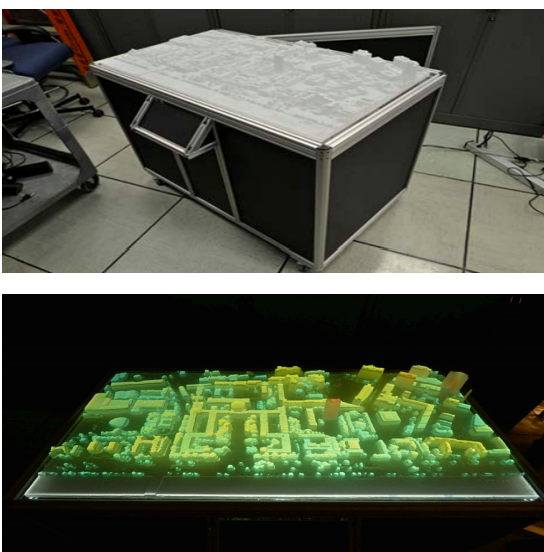How 3-D Printing is Revolutionizing the Display of Big Data
One of the characteristics of our increasingly information-driven lives is the huge amounts of data being generated about everything from sporting activities and Twitter comments to genetic patterns and disease predictions. These information firehoses are generally known as “big data,” and with them come the grand challenge of making sense of the material they produce.

That’s no small task. The Twitter stream alone produces some 500 million tweets a day. This has to be filtered, analyzed for interesting trends, and then displayed in a way that humans can make sense of quickly.
It is this last task of data display that Zachary Weber and Vijay Gadepally have taken on at MIT’s Lincoln Laboratory in Lexington, Massachusetts. They say that combining big data with 3-D printing can dramatically improve the way people consume and understand data on a massive scale.
They make their argument using the example of a 3-D printed model of the MIT campus, which they created using a laser ranging device to measure the buildings. They used this data to build a 3-D model of the campus which they printed out in translucent plastic using standard 3-D printing techniques.
One advantage of the translucent plastic is that it can be illuminated from beneath with different colors. Indeed, the team used a projector connected to a laptop computer to beam an image on the model from below. The image above shows the campus colored according to the height of the buildings.
But that’s only the beginning of what they say is possible. To demonstrate, Weber and Gadepally filtered a portion of the Twitter stream to pick out tweets that were geolocated at the MIT campus. They can then use their model to show what kind of content is being generated in different locations on the campus and allow users to cut and dice the data using an interactive screen. “Other demonstrations may include animating twitter traffic volume as a function of time and space to provide insight into campus patterns or life,” they say.
Weber and Gadepally say their approach is particularly useful when groups of people have to access the data at the same time. They give the example of city planners studying the patterns of traffic that occur in cities. That kind of data is difficult to reason about at a group level without a display that everyone can see and interact with. And the big advantage is that a key part of the data set, the model, is fixed—set in stone, almost. That allows complete flexibility with the data that needs to be crunched but complete inflexibility with the data that doesn’t need to be touched. That can simplify matters considerably.
Of course, there are sophisticated augmented reality devices that can do similar displays but these are expensive to buy and often difficult to operate. By contrast, 3-D models are increasingly easy to print while projectors and laptops are standard tools. And not all data sets are going to be amenable to this kind of treatment. But for those that are, the benefits are clear.
And while these kinds of 3-D models have been used in public displays in museums and such like, they have generally been hugely expensive and designed to show one simple set of data. The new idea is to make the models flexible enough to display all kinds of data and cheap enough for more or less any group to make.
Time to get to work on a model of your office, house, school, tree house.
Ref: arxiv.org/abs/1409.7724: Using 3-D Printing to Visualize Social Media Big Data
Keep Reading
Most Popular
Large language models can do jaw-dropping things. But nobody knows exactly why.
And that's a problem. Figuring it out is one of the biggest scientific puzzles of our time and a crucial step towards controlling more powerful future models.
How scientists traced a mysterious covid case back to six toilets
When wastewater surveillance turns into a hunt for a single infected individual, the ethics get tricky.
The problem with plug-in hybrids? Their drivers.
Plug-in hybrids are often sold as a transition to EVs, but new data from Europe shows we’re still underestimating the emissions they produce.
Google DeepMind’s new generative model makes Super Mario–like games from scratch
Genie learns how to control games by watching hours and hours of video. It could help train next-gen robots too.
Stay connected
Get the latest updates from
MIT Technology Review
Discover special offers, top stories, upcoming events, and more.